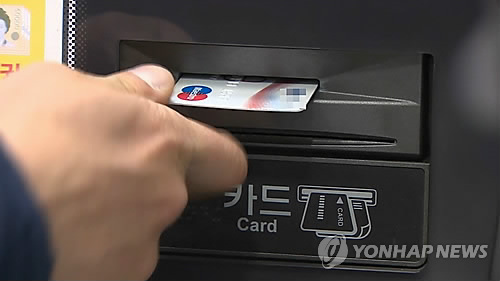Turnovers for deposits fell to their lowest rate in over 11 years in September, the latest central bank figures showed Monday, indicating worsening monetary congestion that is blocking the flow of investment and consumption needed to revive the economy.
The turnover of demand deposits in September came to 19.6, down from 20.7 the previous month. The September number is the lowest since 18.1 in February 2005, the last time the rate fell below 20, according to the Bank of Korea.

The deposit turnover rate is derived by dividing the monthly total of withdrawals by the average account balance. A low number means that people are keeping their money at the bank rather than spending it, a phenomenon associated with times when people unsure about the national economy and affected by an economic slowdown tighten their purses.
The rate has been falling for five consecutive years since 2011 when it was 34.2. Last year, it fell to 24.3.
The trend defies monetary easing by the central bank, which from June this year has kept the country's key rate at a record-low 1.25 percent in hopes of fueling consumption.
Money supply, measured as M2, in September reached its highest of 2.383 trillion won ($2.02 trillion), up 6.9 percent from a year earlier. M2 counts currency in circulation, including bank debentures and deposits with a maturity of less than 2 years plus stock investments.
Balance in demand deposits climbed 15.6 percent from a year ago to 197.32 trillion won.
Economic watchers say conditions may well worsen in the fourth quarter from ongoing political instability, caused by president-linked scandals, and effects from an anti-corruption law that went into effect in late September that puts limits on buying meals and the price of gifts. (Yonhap)




![[Herald Interview] 'Amid aging population, Korea to invite more young professionals from overseas'](http://res.heraldm.com/phpwas/restmb_idxmake.php?idx=644&simg=/content/image/2024/04/24/20240424050844_0.jpg&u=20240424200058)












![[KH Explains] Korean shipbuilding stocks rally: Real growth or bubble?](http://res.heraldm.com/phpwas/restmb_idxmake.php?idx=652&simg=/content/image/2024/04/25/20240425050656_0.jpg&u=)

